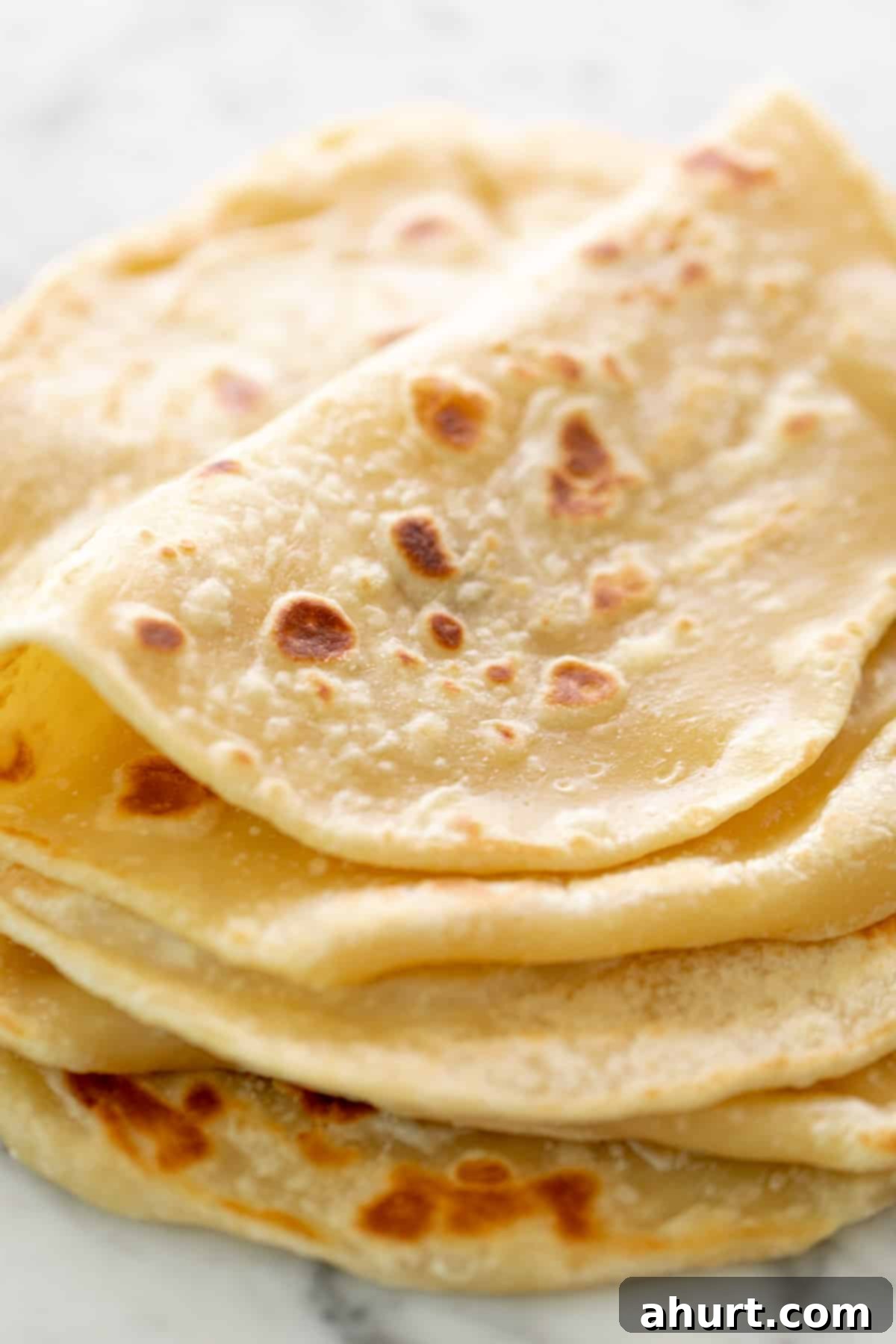Irresistible Easy Garlic Flatbread (No Yeast!): Soft, Fluffy, & Ready in Minutes
Imagine a warm, tender flatbread, generously brushed with fragrant garlic butter, that’s soft and fluffy on the inside with perfectly crisp, golden edges. Now imagine making it in minutes, without any yeast or complicated steps. This quick and easy garlic flatbread recipe is exactly that! Using simple kitchen staples like Greek yogurt, a touch of oil, and a pinch of baking powder, you’ll achieve an incredible rise and texture that rivals any yeast-based bread.
Each flatbread is lightly crushed and infused with garlic-infused olive oil, creating a truly aromatic and irresistible side dish that complements almost any meal. Whether you’re a seasoned baker or a kitchen novice, this is your ultimate go-to garlic flatbread no yeast recipe. It’s perfect for busy weeknights, effortless entertaining, or simply satisfying that craving for freshly baked bread without the wait. Get ready to fall in love with homemade flatbread!
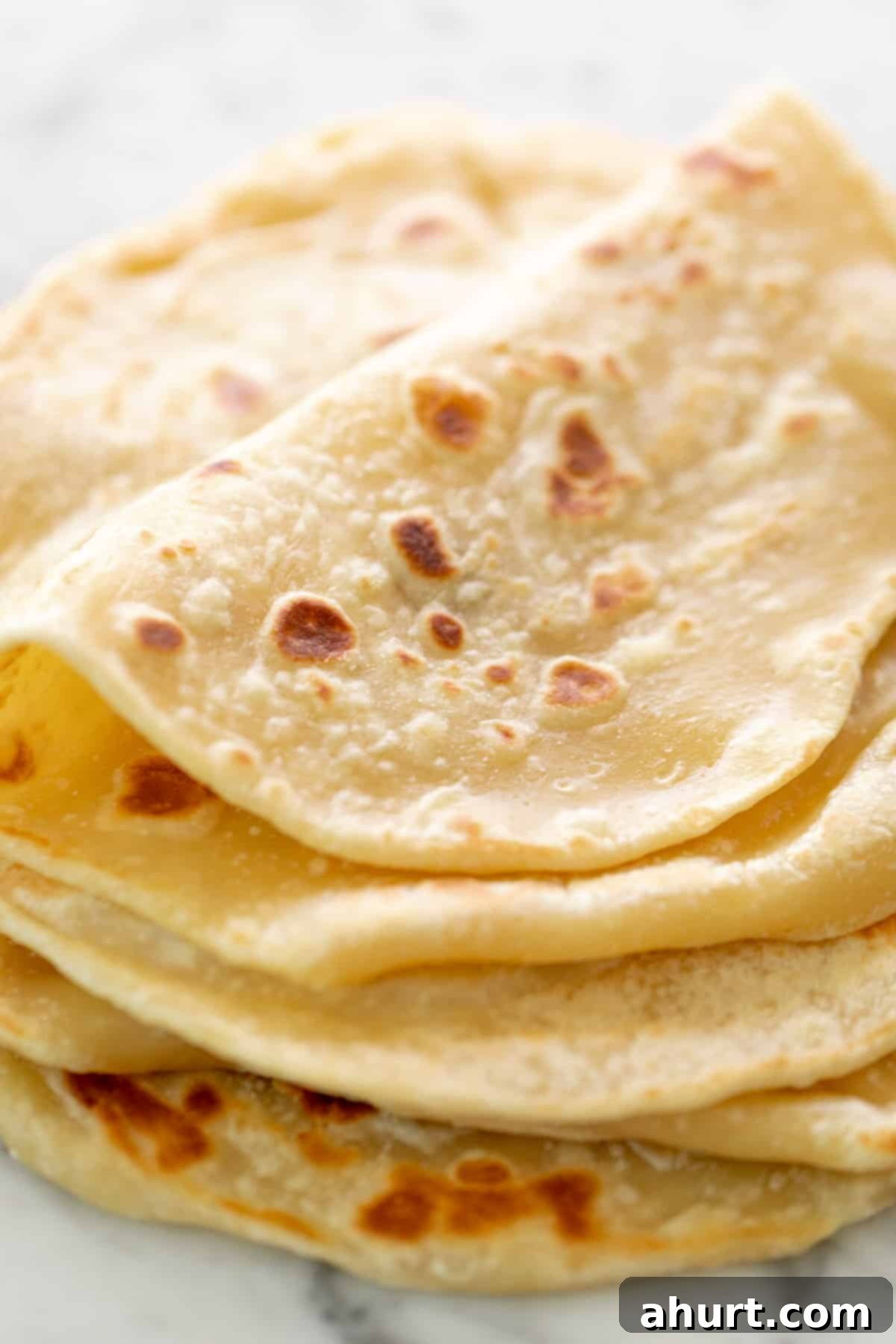
Why This Garlic Flatbread Recipe is a Game-Changer
This no-yeast garlic flatbread isn’t just easy; it’s a revelation for anyone who loves fresh bread but lacks the time for traditional yeast doughs. The magic lies in the clever combination of Greek yogurt and baking powder. Greek yogurt provides acidity, which reacts with the baking powder to create carbon dioxide bubbles. These bubbles are what give the flatbread its beautiful, airy lift and soft, tender crumb, all without the need for yeast proofing. The result is a quickbread that feels surprisingly light and authentic.
A touch of olive oil in the dough ensures each piece stays wonderfully soft and pliable, even as it cools. When cooked in a hot skillet, the exterior develops a delightful crispness and golden-brown hue, contrasting perfectly with the fluffy interior. Finishing each flatbread with a generous brush of garlic butter after cooking truly elevates it, infusing every bite with that irresistible garlicky aroma and flavor. This makes it the ultimate easy flatbread recipe for busy schedules, offering big flavor with minimal effort.
Essential Ingredients for Your Homemade Garlic Flatbread
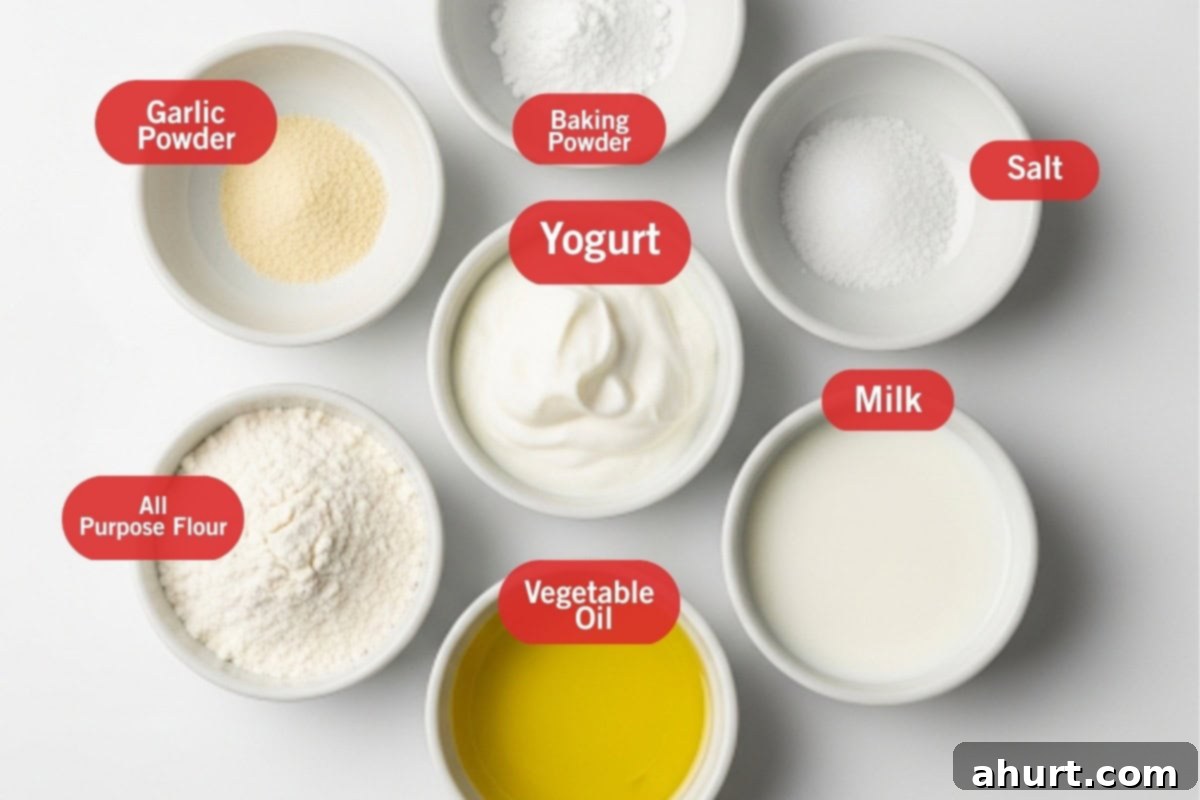
You’ll be amazed at how such a small list of common pantry ingredients can create such a delicious and satisfying homemade flatbread. You likely have most, if not all, of these on hand already!
- Plain (All-Purpose) Flour: This forms the essential structure of your flatbread. All-purpose flour yields a tender, chewy texture without being overly dense. While some readers have successfully used whole wheat or gluten-free alternatives, plain flour provides the most consistent results for this recipe.
- Greek Yogurt: A cornerstone of this Greek yogurt flatbread. Its thickness and acidity are key. The acidity reacts with the baking powder to create a beautiful rise, while its rich texture adds incredible moisture and tenderness to the dough, preventing it from drying out during cooking.
- Olive Oil: More than just a lubricant, olive oil contributes a lovely flavor and helps keep the dough pliable and soft. It also aids in developing that desirable golden crust when the flatbreads are cooked in a hot skillet. You’ll also use it to brush the pan and the finished flatbreads.
- Garlic Powder: This is where the signature garlicky aroma comes from. Integrated directly into the dough, it ensures a consistent garlic flavor throughout. It’s optional if you prefer a plain flatbread, but highly recommended for a true garlic flatbread experience.
- Baking Powder: The leavening agent that makes this a superb no yeast flatbread. It reacts with the yogurt’s acidity (and moisture) to create the airy pockets that give the flatbread its soft, fluffy texture.
- Salt: Essential for enhancing all the flavors in the dough and ensuring the flatbread isn’t bland.
- Milk: Used to adjust the dough’s consistency, ensuring it’s hydrated enough to be soft and pliable without being too sticky. Any type of milk (dairy or non-dairy) will work.
Note: For precise quantities and a complete list of ingredients with measurements, please refer to the comprehensive recipe card located at the bottom of this page.
How To Make Your Easy Garlic Flatbread: Step-by-Step
Creating these delightful skillet flatbreads is surprisingly straightforward. Follow these steps for perfect, fluffy results every time:
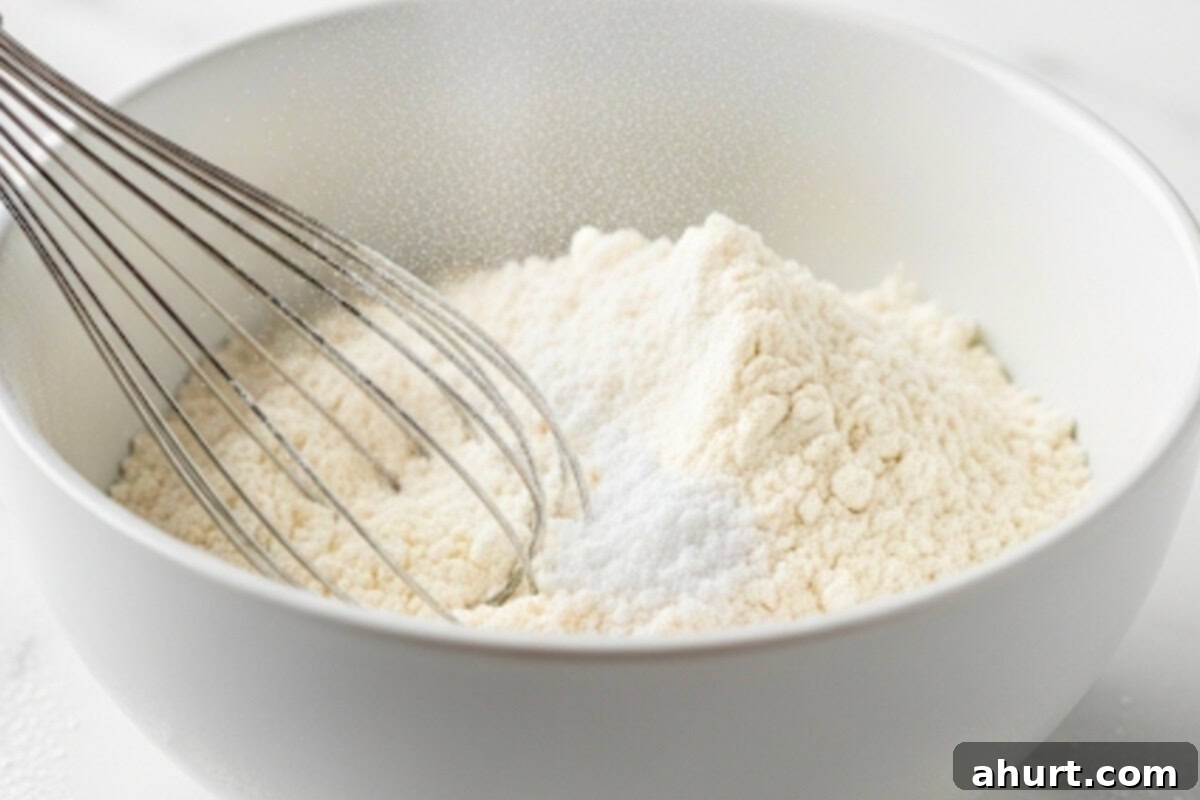
- Mix Dry Ingredients Thoroughly
In a large mixing bowl, combine the flour, baking powder, salt, and the optional garlic powder. Whisk these dry ingredients together well to ensure that the baking powder and salt are evenly distributed. This step is crucial for consistent flavor and a good rise in every flatbread. Create a small well in the center of the dry mixture.
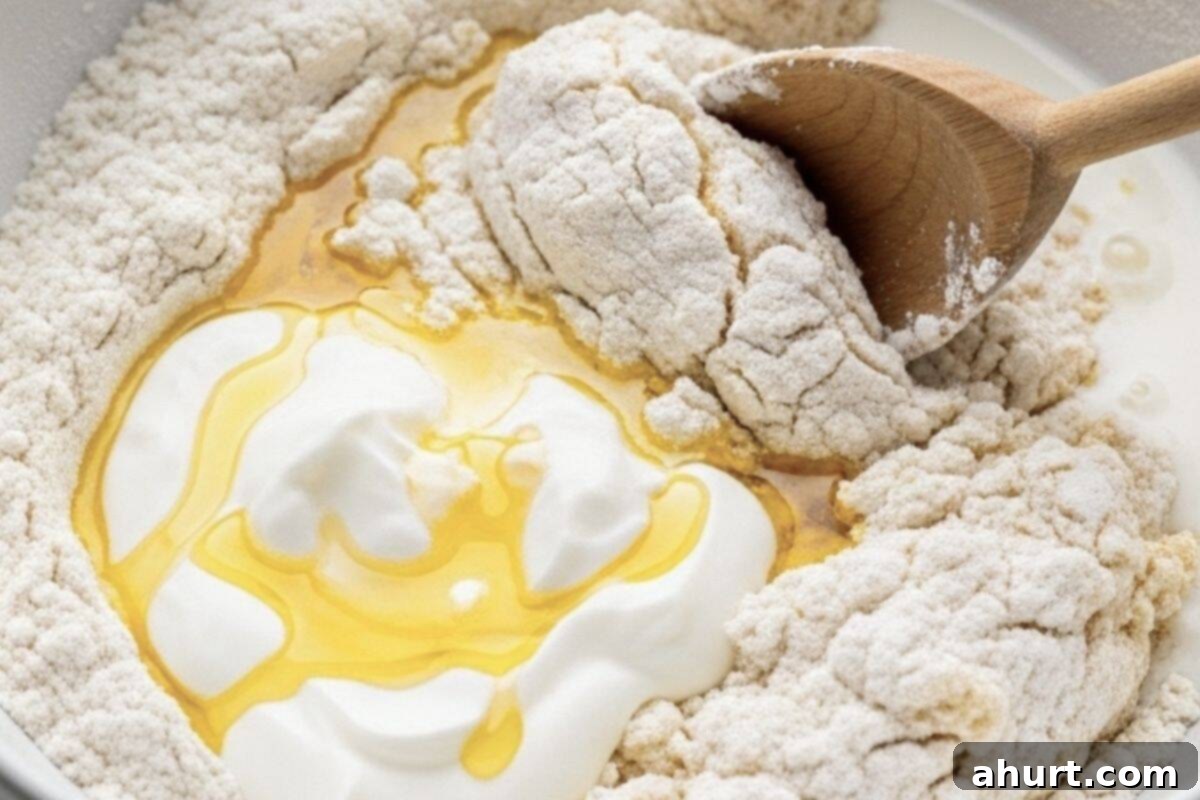
- Incorporate Wet Ingredients Gradually
Pour the Greek yogurt, olive oil, and about half of the milk (1/2 cup) into the well you made. Using a sturdy wooden spoon or spatula, begin stirring from the center outwards, gradually incorporating the flour. Continue to mix until the flour starts to hydrate and form a shaggy, somewhat crumbly dough.
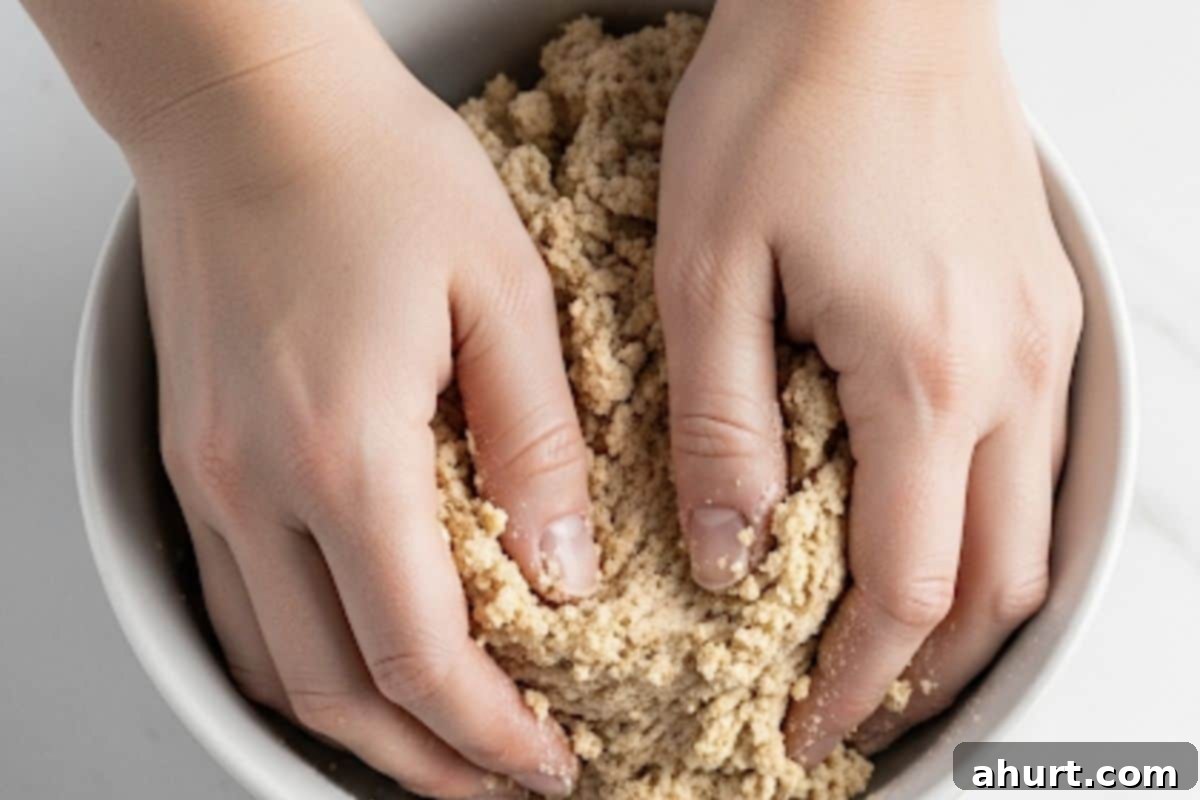
- Adjust Hydration and Bring Dough Together
If the dough still appears too dry or crumbly after initial mixing, gradually add the remaining milk, a tablespoon at a time, until the mixture starts to come together. Switch to using your hands to gently knead and bring the dough into a cohesive ball. This ensures all ingredients are well combined and the dough achieves the right consistency.
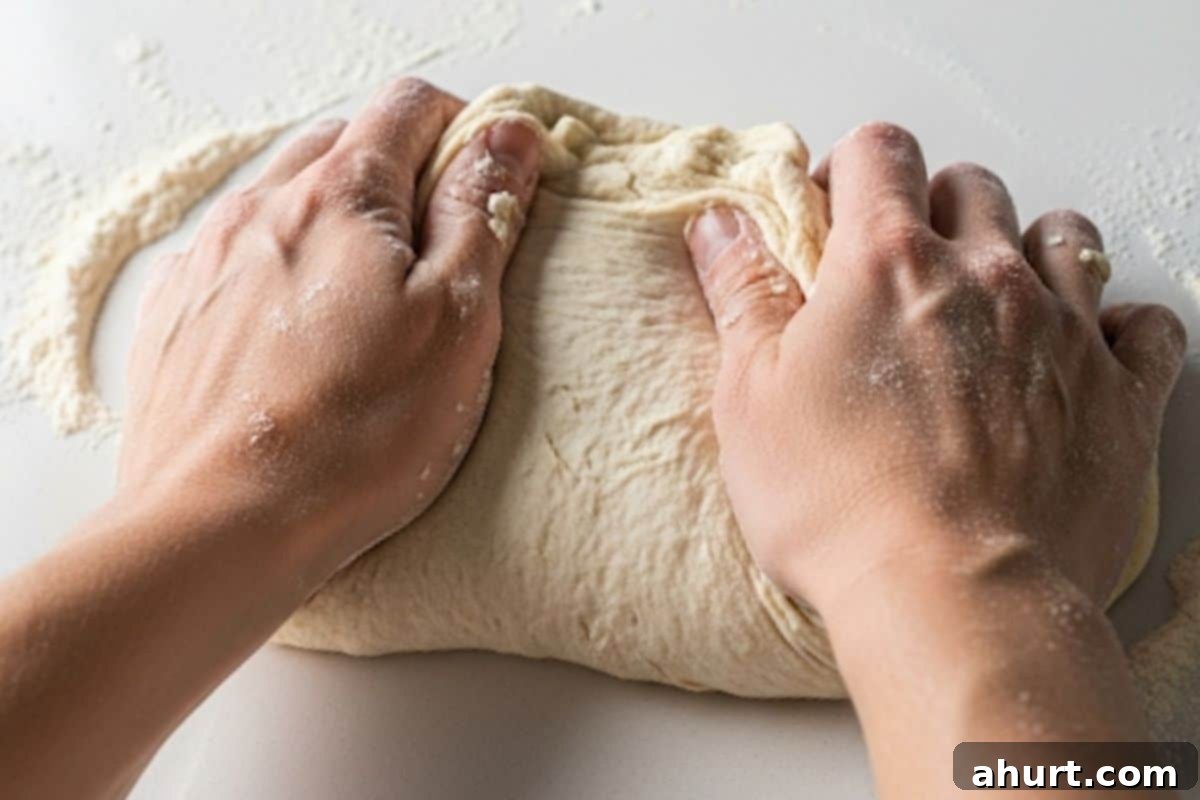
- Achieve a Soft and Slightly Sticky Dough
The ideal dough for soft and fluffy flatbread should be pliable and workable, but also slightly sticky to the touch. This stickiness is a good sign, indicating adequate hydration which leads to moist, tender flatbreads. Resist the urge to add excessive extra flour at this stage, as too much flour will result in dry, tough flatbreads.
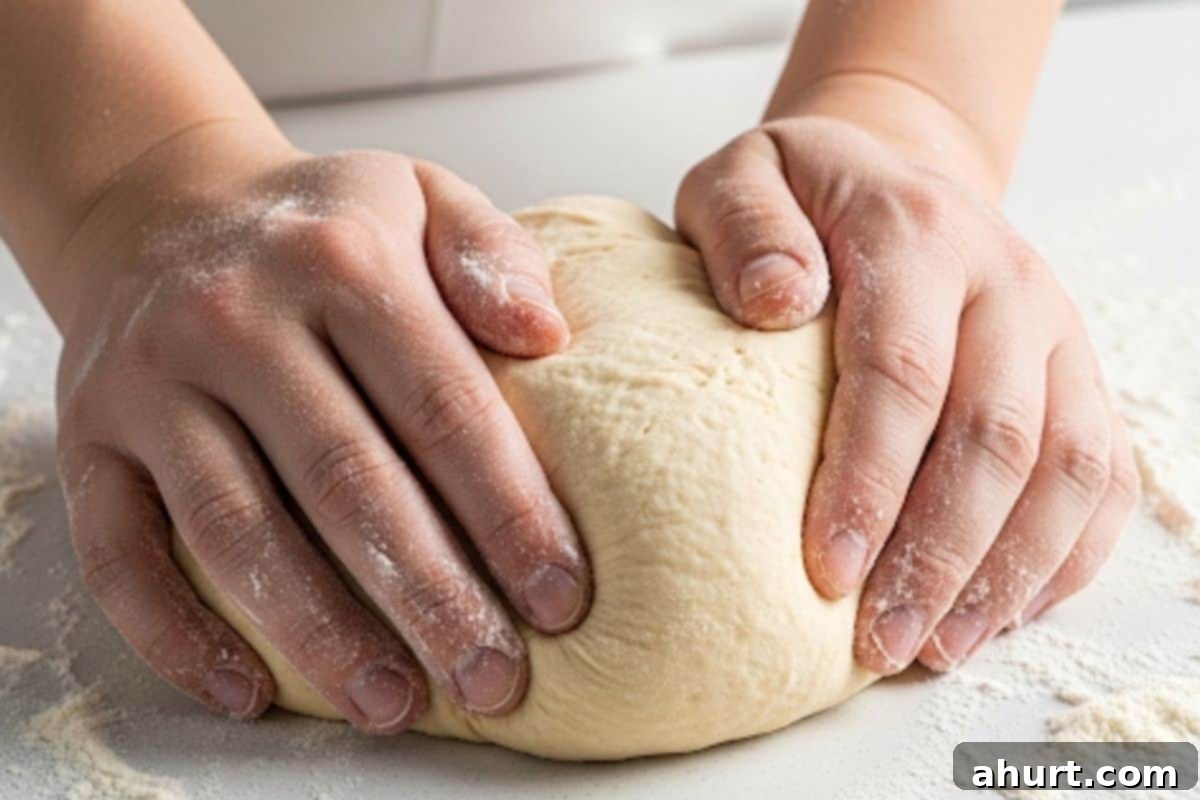
- Brief Kneading for Smoothness
Turn the dough out onto a lightly floured work surface. Knead it gently for about 2 to 3 minutes. The goal here is not extensive gluten development, but rather to smooth out the dough and ensure all ingredients are fully integrated. Add just a very light dusting of flour if the dough becomes too sticky to handle, but avoid over-flouring.
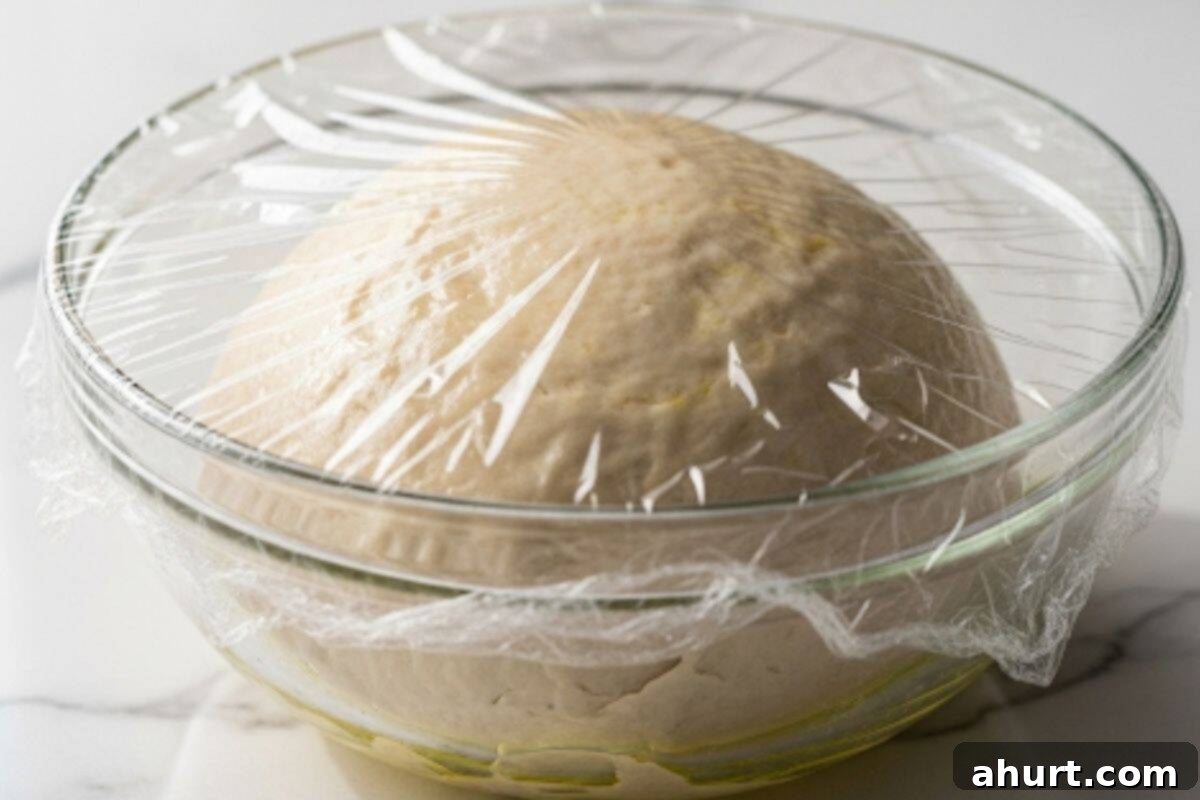
- Allow the Dough to Rest
Place the kneaded dough into a lightly oiled bowl, turning it once or twice to ensure it’s coated in oil. This prevents it from drying out and sticking. Cover the bowl tightly with plastic wrap and let the dough rest at room temperature for at least 30 minutes. This resting period allows the gluten to relax, making the dough easier to roll and yielding a more tender flatbread.
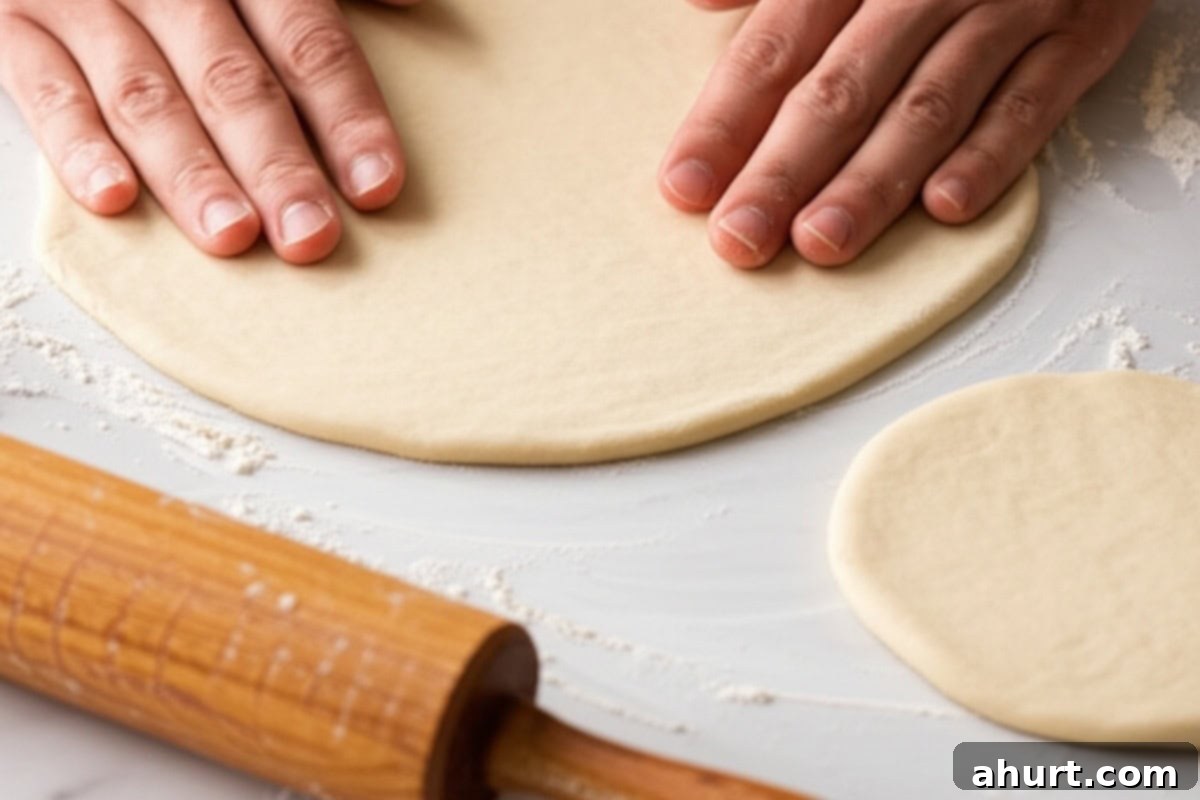
- Portion and Roll Out
After resting, lightly knead the dough a few more times on a clean, unfloured surface. Then, divide the dough into 6 equal balls for larger flatbreads, or 8 for slightly smaller wraps. Work with one ball at a time, keeping the others covered. Flatten each ball with the palm of your hand, then use a rolling pin to roll it into a round shape, approximately 5 mm (about 1/8-inch) thick. Aim for an even thickness to ensure even cooking.
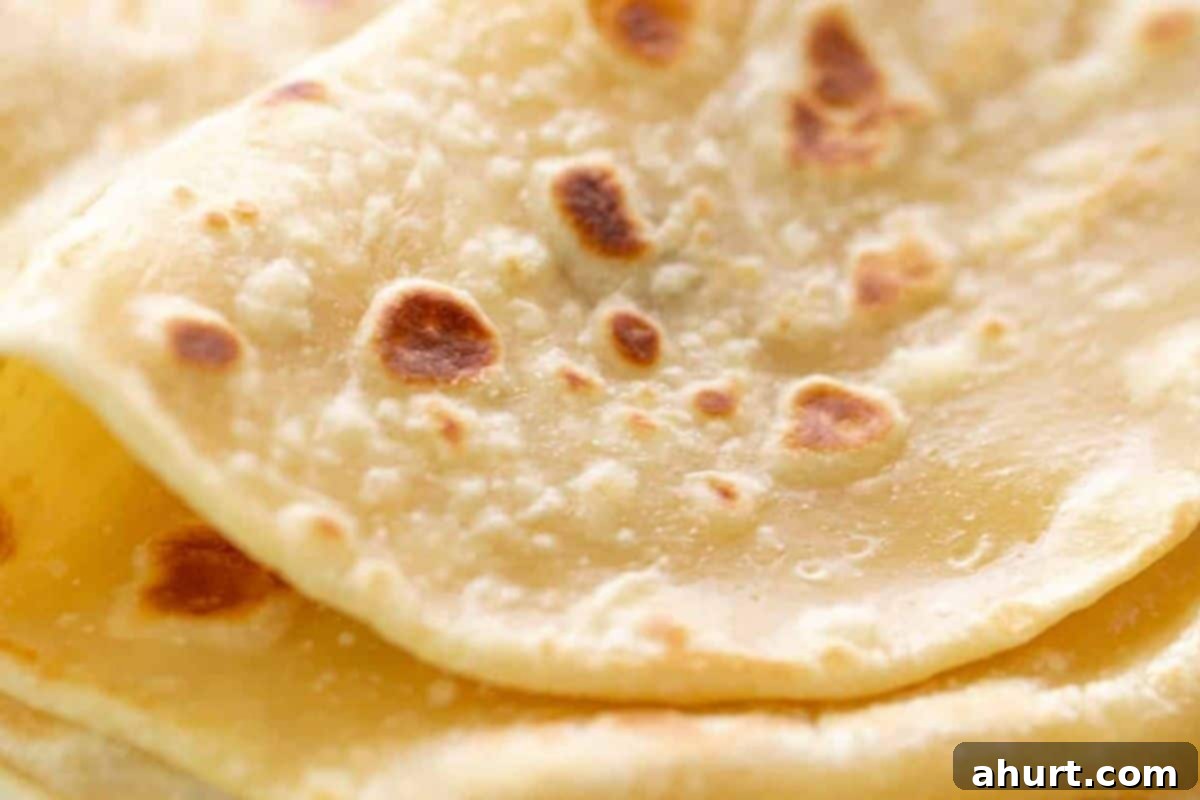
- Cook and Finish Perfectly
Heat a nonstick pan over medium heat and lightly brush it with olive oil. Place one rolled flatbread in the pan and cook for about 2 minutes, or until bubbles appear on the surface and the underside is golden. Flip it over and cook for another 1-2 minutes, gently pressing down with a spatula to encourage puffing and ensure even cooking. Transfer the cooked flatbread to a plate lined with a clean tea towel and wrap it to keep warm and soft while you cook the remaining pieces. Before serving, lightly brush each warm flatbread with a small amount of extra olive oil or delicious garlic-infused oil for that final burst of flavor.
Serving Suggestions for Your Versatile Flatbread
This garlic butter flatbread is incredibly versatile and pairs beautifully with a wide array of dishes. Its soft texture and garlicky notes make it ideal for soaking up rich sauces, scooping up hearty fillings, or simply enjoying on its own. Try serving it with Chicken, Green Bean and Butternut Squash Curry – the flatbread is perfect for scooping up every last drop of that aromatic sauce, creating a truly comforting and warming dinner. For an elevated seafood experience, pair it with Creamy Garlic Shrimp Cauliflower Rice Risotto; the garlic in the flatbread harmonizes wonderfully with the creamy, rich flavors of the shrimp and risotto. For a unique and delicious twist, use it as a side for Sausage Eggplant Lasagna with Ricotta Pesto — the savory garlic notes in the bread complement the cheesy, herby layers of the lasagna beautifully, adding an extra dimension to the meal. You can also use it as a base for mini pizzas, a side for hummus, or as a wrap for grilled meats and vegetables.
Tips for Perfect No-Yeast Flatbread Every Time
- Dough Consistency is Key: Remember, a slightly sticky dough is your friend. It indicates proper hydration, which is essential for soft and moist flatbreads. Resist the urge to add too much extra flour when kneading or rolling, as this can make the flatbread tough and dry.
- Don’t Over-Knead: Unlike yeast breads, this dough doesn’t require extensive kneading. A few minutes to bring it together until smooth and cohesive is all you need to relax the gluten for easy rolling.
- Resting Time Matters: The 30-minute rest period is important. It allows the gluten to relax, making the dough much easier to roll thinly without springing back. It also gives the baking powder a little more time to activate, contributing to a better rise.
- Medium Heat is Crucial: When cooking, maintain a consistent medium heat. If the pan is too hot, the flatbread will burn on the outside before cooking through on the inside. If it’s too low, it won’t puff up and will become tough and dry. Look for those characteristic bubbles appearing on the surface.
- Stack and Cover: As soon as each flatbread comes off the pan, stack it in a clean tea towel and wrap it up. The trapped steam will keep the flatbreads warm, soft, and pliable while you cook the rest, preventing them from drying out.
- Garlic Butter Finish: Don’t skip the final brush of olive oil or garlic-infused oil. This adds a beautiful sheen, extra moisture, and an intense burst of flavor that truly completes the garlic flatbread experience.
Flavor Variations to Customize Your Flatbread
While the classic garlic flatbread is undeniably delicious, this base recipe is incredibly adaptable. Feel free to experiment with different additions to create unique flavor profiles:
- Herby Flatbread: Mix 1-2 tablespoons of finely chopped fresh herbs like parsley, cilantro, chives, or oregano into the dough with the wet ingredients. You can also sprinkle fresh herbs over the cooked flatbreads with the garlic oil.
- Cheesy Flatbread: Add 1/2 cup of shredded Parmesan, mozzarella, or a blend of Italian cheeses to the dry ingredients. For extra indulgence, sprinkle more cheese on top during the last minute of cooking in the pan, covering briefly to melt.
- Spicy Kick: Incorporate 1/2 teaspoon of red pepper flakes or a pinch of cayenne pepper into the dry ingredients for a subtle heat. You can also add a finely minced jalapeño (seeds removed for less heat) to the dough.
- Everything Bagel Seasoning: For a savory, textural crunch, sprinkle everything bagel seasoning over the flatbreads just before cooking them in the skillet.
- Rosemary & Sea Salt: Add a tablespoon of finely chopped fresh rosemary to the dough and finish with a sprinkle of flaky sea salt after brushing with olive oil.
Recipe FAQ’s
Absolutely! This recipe is a garlic flatbread no yeast version that exclusively uses baking powder for lift. You’ll still achieve incredibly soft, fluffy bread without the extra time and effort needed for yeast to proof, making it much faster and more convenient for quick meals.
Plain Greek yogurt is ideal for this quick flatbread recipe because its thick consistency and higher protein content contribute significantly to a tender and pliable dough. If Greek yogurt isn’t available, plain natural yogurt can be used as a substitute, though you might need to slightly adjust the milk quantity as natural yogurt can be a bit thinner.
Definitely! For an even more intense fresh garlic flavor, mince fresh garlic cloves and mix them into melted butter or olive oil. Brush this fragrant garlic mixture generously onto the cooked flatbreads right after they come off the pan. You can also lightly sauté the minced garlic in the oil first to mellow its intensity before brushing.
Olive oil is recommended for its flavor and health benefits, both in the dough and for brushing the pan/finished flatbreads. However, vegetable oil or any neutral-flavored oil will also work perfectly fine for the dough and cooking. For brushing the cooked flatbreads, an extra virgin olive oil or a dedicated garlic-infused olive oil will provide the best flavor.
Tough flatbread is usually a result of too much flour in the dough or overcooking. Ensure your dough remains slightly sticky before kneading, and avoid adding excessive flour during the kneading and rolling stages. When cooking, use medium heat and cook only until golden spots appear, as cooking for too long will dry out the bread.
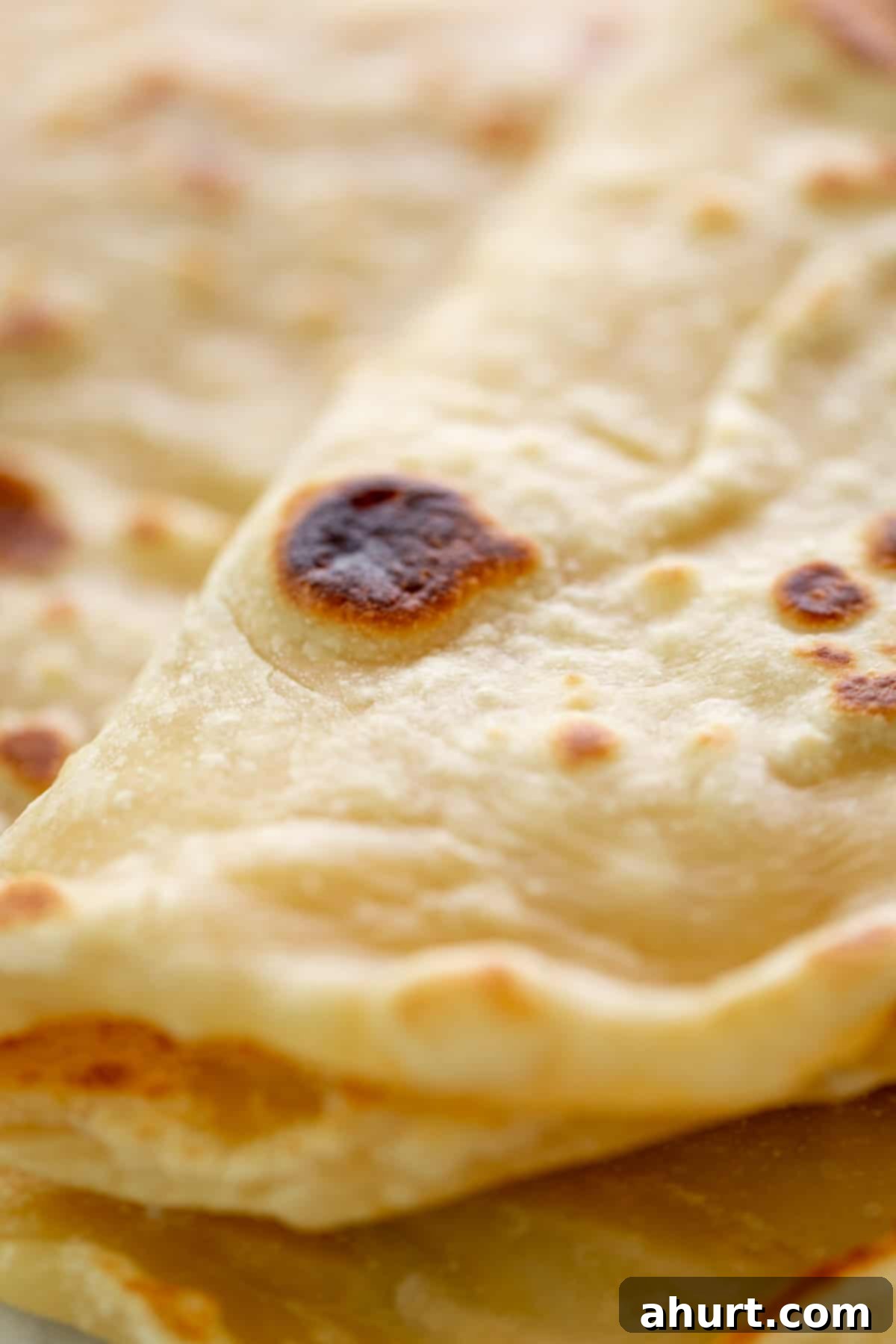
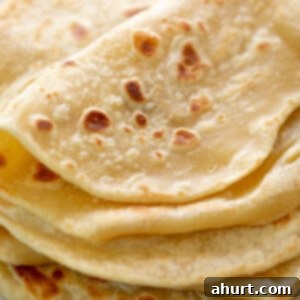
Pin
Easy Flatbread Recipe
Ingredients
FLATBREADS
- 3 cups plain flour plus extra for dusting
- 1 teaspoon baking powder
- 1 teaspoon salt
- 1 teaspoon garlic powder optional
- 3/4 cup plain Greek yogurt or natural plain yogurt
- 1/4 cup vegetable oil or olive oil, plus extra for cooking
- 3/4 cup milk divided
Instructions
-
Whisk flour, baking powder, salt and garlic powder together in a bowl. Make a well in the centre. Add yogurt, oil and 1/2 cup (125ml) of milk. Mix with a wooden spoon so that the milk absorbs the flour. Gradually mix in the remaining milk if mixture is too dry or crumbly. Bring the dough together with your hands. The dough should be workable BUT sticky to the touch (sticky dough = soft, moist flatbreads).
-
Turn dough out onto a lightly floured work surface. Sprinkle the top of the dough with a little extra flour if too sticky. Knead to form a smooth, soft and semi-sticky ball, about 2-3 minutes.
-
Return dough to lightly oiled bowl, rotating the dough twice in the oil to evenly coat. Cover with plastic wrap. Set aside to rest for 30 minutes.
-
Knead dough a few more times until smooth. (You shouldn’t need any extra flour at this point to knead, as the oil from the dough will help you).
-
Divide dough into 6 equal balls for larger wraps, or 8 balls for smaller wraps. Working one piece at a time, flatten one ball out with the palms of your hands. Use a rolling pin to roll it to about 5mm thick (about 1/8-inch).
-
Lightly grease a nonstick pan with a drizzle of olive oil, (about 1/2 teaspoon), over medium heat. Cook one flatbread for 2 minutes on one side (it will bubble up). Flip and cook until golden, lightly pressing down with a spatula when it puffs up.
-
While one piece is cooking, roll the next piece out and repeat steps above (working one flatbread at a time avoids them from drying out).
-
Stack them up on a plate lined with a clean tea towel and wrap them up to keep them warm and soft while cooking the rest — the steam helps keep them soft.
-
To serve, lightly brush each piece with a small amount of olive oil or garlic olive oil.
Notes
FLOUR SUBSTITUTIONS
WHOLE WHEAT (WHOLEMEAL) FLOUR works the same. You may need to add a couple tablespoons extra milk as whole wheat tends to be a little more absorbent than plain white flour.
MAKE AHEAD: The raw dough can be stored in the refrigerator for up to 3 days. To store, roll each ball out into rounds ready for cooking. Use cling wrap or parchment paper to keep the rounds separated.
STORAGE: Cooked flatbreads can be stored at room temperature for a day wrapped in cling wrap, or the refrigerator for up to 2 days. To reheat, pop them on a pan over medium heat or in the microwave for 8-10 seconds.
They also last well in the freezer up to a month. Store in a ziplock bag with cling wrap or parchment paper between each wrap to keep them separated.
Nutrition
Nutrition information is automatically calculated, so should only be used as an approximation.
